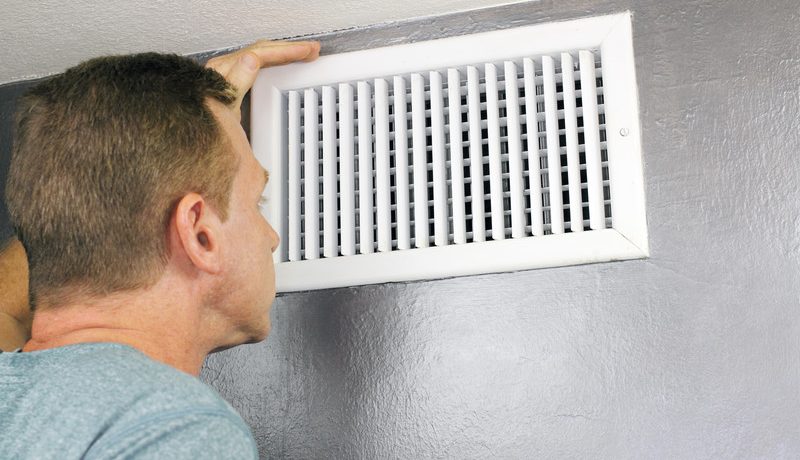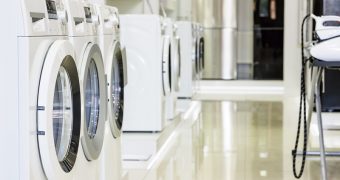How to Improve Indoor Air Quality
As the property manager of a multifamily housing complex, you have a lot on your plate: collecting rent, keeping up with maintenance, marketing to prospective renters, and much more.
In fact, it’s easy to overlook something as seemingly mundane as air . However, the air inside of your apartments or condos can have a big impact on the long-term contentment of your renters.
Poor indoor air quality and ventilation may cause some of your best long-term tenants to look for rentals elsewhere. That means turnover and lost rent. The bottom line is this: if you are a multifamily property manager, ventilation and indoor air quality is something you must improve.
In this article, we discuss the air quality issue that plagues buildings and offer tips on how to improve it.
Why is Indoor Air Quality so Important?
Too often, clean air is taken for granted and overlooked when a new building is being constructed or renovated. Fumes, dust, mold from humidity, and other contaminants may become a constant issue.
Ventilation and indoor air quality are often considered as a post-project afterthought. Yet, in a multifamily residential setting, both are crucial because of their direct impact on renter happiness and long-term satisfaction with the property.
Improve Tenant satisfaction
As any longtime property manager knows, happy renters make your life much easier. In competitive markets, your property needs any edge it can get when it comes to attracting good, long-term renters. The happier they are, the more consistent your rental income will be and the fewer problems you will encounter.
Prioritize keeping good renters who have an outstanding rental history, pay their rent on time, take care of the property, and follow the rules you have set out for the rental. Bear in mind that if this type of renter is unhappy with the quality of the property, they will no doubt have other suitors.
For obvious reasons, renters are going to be unhappy if the property has potentially dangerous air quality problems, such as the presence of mold, radon gas, or excessive secondhand smoke. Depending on the laws in your area, any of these IAQ issues could be grounds for the tenant to get out of the lease and out of your property. Even if that is not the case, these problems could be the impetus for them looking elsewhere when their lease is up.
Ventilation and Secondhand Smoke
Many states have taken a strong stand against secondhand smoke in multifamily housing. Arizona, Minnesota, and Colorado have banned it from multifamily common areas altogether, while most municipalities in California also prohibit it.
However, with poor ventilation in your building, secondhand smoke in any individual unit—often something out of your control and within the bounds of state and local law—can quickly become something that affects all of the units and renters. The U.S. Surgeon General has warned that poor indoor ventilation is a key player in residential secondhand smoke exposure in multifamily housing.
You may or may not be able to stop 100% of your tenants from smoking: even if your state’s laws allow you to ban smoking by tenants—as is the case in California—it only takes one bad actor to create a headache for you. Our recommendation is instead to mitigate the impact of secondhand smoke and other IAQ contaminants by improving your building’s ventilation.
Other Air Contaminants
Indoor air quality issues are caused by more than just smoke and mold. One way to think about IAQ contaminants is by dividing them into two categories: man-made and natural.
Man-made contaminants
This category includes indoor air quality irritants not typically found in outside air. Man-made contaminants include gases, fumes, and odors given off by furniture or construction materials, such as formaldehyde in kitchen cabinets, VOCs in carpet glue and furniture stains, and sealants used in kitchen and bathroom countertops. This can also include pesticides, asbestos, and lead paint exposure. The latter two have a variety of state and federal laws that apply to them, as they present a clear and present a hazard to renters and are more than just an IAQ nuisance.
Natural contaminants
This includes dust, pet hair, pet dander, pollen, airborne viruses, and other organic materials that become trapped in indoor air, causing sickness and aggravating the pet and pollen allergies of your renters. While not a “contaminant,” humidity control is considered to be an aspect of indoor air quality, as well. If the air is too dry or too humid in the units, it will impact the happiness of your renters.
The IAQ Test
A good place to start is by scheduling an indoor air quality assessment with a local, certified IAQ professional in your area. Confirm ahead of time that they work with multifamily apartment buildings. Think of an IAQ test like a checkup for your car: before you can start making repairs, you want the mechanic to give you a complete view of where everything stands, what could be fixed in the near future, and critical issues that must be addressed right away.
Once you have the results of your IAQ test, talk with the professional about your options. If they have experience working with property managers, they should be able to recommend effective air quality improvement strategies for your building. If not, ask them to refer you to companies in your area that work with multifamily housing units.
Some of the most common recommendations are centered on a few key areas:
- Addressing the source of the problem: If your IAQ test reveals that there are mold particles in the building’s air, you will obviously need to call a professional in to find and treat the mold, wherever it is. Mold remediation is a critical step in improving indoor air quality.
- Adding ventilation: In many cases, flushing out smoke and stale air requires the addition of air intake systems that cycle inside air outside and vice-versa. This may include upgrading the kitchen and bathroom exhaust fans in each unit, or adding large ventilation fans to common areas.
- Air quality mitigation: In addition to addressing IAQ issues head-on and adding ventilation, you may need to look at installing air filters, UV filters, and other air quality improvement devices, either in individual units of the building or in hallways and common areas. Cooling and heating maintenance is a critical piece of the air quality puzzle. Not only does a seasonal checkup help your air conditioner, furnace, or heat pump run at its best, but having a technician clean out the system can prevent dust and dirt from getting into your circulated air.
Take the next step toward Better Air Quality
By taking steps today to better the indoor air quality of your building, you help ensure that your best renters remain happy and continue renting from you in the future. If you haven’t already, talk to an IAQ and ventilation specialist in your area.
Every multifamily housing situation is different, and you’ll need an on-the-ground professional to provide you with a detailed and individualized assessment and recommendation.
Like to Know more about air quality and heating and cooling? See the pros at King Heating, Cooling and Plumbing, a professional HVAC & duct cleaning company in Oak Forest, IL.
Struggling with managing your properties? See our Property Management Guide.
See also from our blog: Property Management Software | When Will Rent Prices Go Down? | Housing Market Outlook | More Cloud Benefits | Multifamily Housing Investment | Property Management Software Tips | Online Rent Payment | Landlord Leads | Apartment Management Software | Apartment Rental Prices | Best Cities to buy Rental Property | Property Management Guide | National Apartment Association


